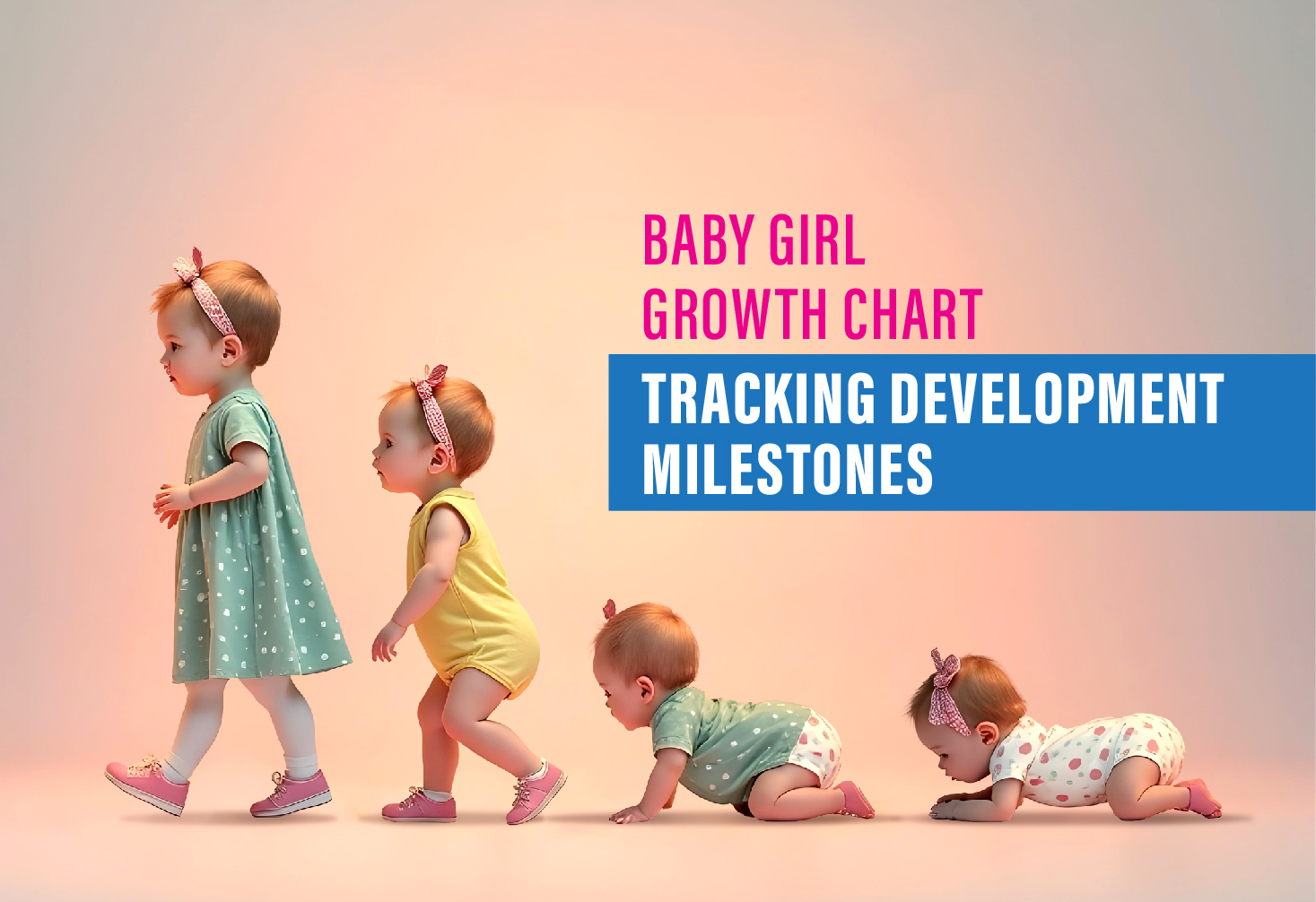Baby Girl Growth Chart 0–36 Months | P. D. Hinduja Hospital – Khar

Any parent of an infant would have a common hobby. They love to watch their baby girl grow. This experience is like a reward for early parenthood. We often come across a worried mother who has a question: Is my baby growing well? This thought usually comes because there are so many developmental processes, all happening at the same time. Growth charts come with a great level of insight and help parents overcome their worries.
Growth chart female 0-36 months are there to track the early developmental milestones. The baby growth charts help you track key development milestones in weight, height (length), and head circumference from birth to 36 months. Let’s get a clearer picture of the weight chart for baby girl and how to interpret it.
What Is a Growth Chart (Female 0–36 Months)?
A growth chart is a visual tool that compares your baby’s measurements to standardized growth patterns. It tells you which percentile your child falls into—like the 50th percentile (average) or 90th percentile (larger than average). A consistent growth curve matters more than the exact percentile.
The growth metrics tracked are:
- Weight (in kg)
- Length/Height (in cm)
- Head Circumference (in cm)
What do you do? You track these every month in the first year. And after that, you track every few months. Pediatricians use them during check-ups to ensure your baby is growing steadily.
How to Interpret a Baby Girl's Growth Chart
Growth charts can feel confusing, but here are simple tips to keep in mind:
- Percentiles are Not Grades: A baby in the 10th percentile is not “below average”—it just means 10% of babies are smaller.
- Consistency is Important: The most important sign of healthy growth is following the same curve over time.
- Don’t Compare with Others: Genetics, nutrition, and health all affect growth. Two healthy babies can have very different percentiles.
Always consult your pediatrician before drawing conclusions from growth data.
Final Thoughts
So, now you know that growth charts for baby girls are very powerful tools. But they should not stress you. The best sign of your baby girl's health is her being active, happy, and feeding well. Use the growth chart for female 0–36 months as a guide, not a scoreboard.
When in doubt, bring your concerns to your pediatrician. They can interpret the data in the full context of your child’s health. Consult the experienced experts at Hinduja Hospital in Khar for better insights into baby girl growth charts.
FAQs
What do the percentiles mean in growth charts?
Growth charts use percentiles to show you how your child's measurements compare to other children of the same age and gender. A 50th percentile means average; a 97th percentile means the child is larger than 97% of their peers, and so on.
How important is a baby girl’s head circumference?
The circumference of your baby girl's head tells some details about her general development and brain growth. You must monitor it frequently and seek medical advice if you have any concerns. A sharp rise or fall could be an indication of malnourishment or other problems.
Are the growth patterns of baby girls and boys different?
Yes, the growth patterns of baby girls and boys are different. The first few months of life show marked differences. The infant girls often grow a little more slowly than baby boys. Although both girls and boys grow similarly as they become older, they are typically smaller in weight and length in the early stages of infancy.
Submit your query